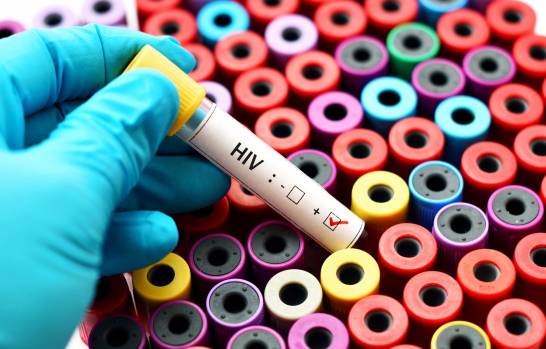The third case of cure for HIV infection in the world was presented today by the IciStem consortium, coordinated by IrsiBox. This is a man who was withdrawn from supervised HIV antiretroviral treatment after undergoing a stem cell transplant to treat myeloid leukaemia. Four years later, the virus has not reappeared.
According to the article, published in the journal Nature Medicine, it was possible to verify the absence of viral particles and an immune response against the virus in the patient’s body, despite not receiving treatment for four years, evidence that allows the scientific team to consider that the The case of the patient from Düsseldorf is a new case of healing.
The study was carried out by the international consortium iciStemcoordinated by the IrsiCaixa AIDS Research Institute, a center jointly promoted by the La Caixa Foundation and the Department of Health of the Generalitat de Catalunya, in collaboration with the University Medical Center of Utrecht (Holland).
Patient withdrawn from supervised HIV antiretroviral treatment after undergoing a stem cell transplant to treat leukemia
“Together with an excellent team of professionals from all over the world, we spent nine years studying these exceptional cases in which, thanks to a therapeutic strategy, the virus is completely eliminated from the body”, explains Javier Martínez-Picado, ICREA researcher at IrsiCaixa and co-author of the article. “We want to understand in detail each stage of the healing process in order to devise replicable strategies for the entire population”, he adds.
A story of overcoming
In 2008, a medical team in Düsseldorf (Germany) diagnosed HIV infection in a person who would later be known as ‘the Düsseldorf patient’, due to his uniqueness. After the diagnosis, the patient started antiretroviral treatment, which allowed him to control the infection and reduce the amount of virus to undetectable levels in the blood.
Four years later, in 2012, he had leukemia, that is, cancer in the cells of the immune system, for which he had to undergo a stem cell transplant. In these unique cases, a stem cell donor with the CCR5Δ32 mutation is sought. This genetic alteration prevents one of the entry points for HIV into cells and, therefore, makes infection more difficult.
“It is very complicated that all these factors coincide: only 1% of the population has this mutation and, in addition, it is necessary to be a compatible donor at blood level to avoid rejection of the transplant”, says María Salgado, IGTP researcher at IrsiCaixa and co-author of the study.
When he stopped taking antiretrovirals, we followed him for 44 months and did not detect any traces of the virus in the patient’s body.
Maria Salgado
In the case of the Düsseldorf patient, a woman allowed all the pieces to fall into place. More than five years after the transplant, and having gone through two relapses of the leukemia and several complications, the patient stabilized. Thereafter, the research team agreed to withdraw antiretroviral HIV treatment. As of today, the patient from Düsseldorf is 53 years old and in good health.
“When he stopped taking the treatment, we followed him for 44 months and we did not detect any traces of the virus in the patient’s blood or tissues”, emphasizes Salgado. “We didn’t observe any immune response characteristic of any viral outbreak. Their defenses are not activated against HIV because they don’t need to defend against the virus.”
All these data allow the scientific team to state that the person has been cured of HIV infection.
HIV cure map
Confirmation of the cure of patients in Berlin and London precedes that of Düsseldorf. Despite being the only three cases in which one can speak of a cure, the remission of HIV in two other patients, the one in New York, and the one at the City of Hope Hospital located in Duarte, USA, have already been presented at scientific conferences.
Today, the patient from Düsseldorf is 53 years old and in good health.
“None of them have special immunological characteristics that allow them to spontaneously control the HIV infection, on the contrary, the virus was eliminated from the body as a result of medical intervention. This differentiates these cases of eradication from those of functional cure in elite controllers or post-treatment achieved so far, in which people’s own bodies had special factors that made it possible to control the virus”, specifies Salgado.
The Düsseldorf patient is, therefore, a third proof of concept that demonstrates that there is a possibility of curing HIV and sparks, once again, the hope of the scientific world that is dedicated to combating this virus. However, this strategy is too aggressive and does not scale to the rest of the population.
Stem cell transplantation only applies to people who suffer from a hematological disease and have no therapeutic alternative. In the case of people with HIV, there is an alternative, which is antiretroviral treatment.
“A possible strategy that is already being worked on is to introduce the CCR5Δ32 mutation through gene therapy to achieve a cure for HIV without the need for a transplant”, concludes Martínez-Picado.
Reference:
BEOJensen et al. “In-depth virological and immunological characterization of HIV-1 cure after allogeneic CCR5Δ32/Δ32 hematopoietic stem cell transplantation”. natural medicine (2023)
